Use of "Fitosporin" for strawberries
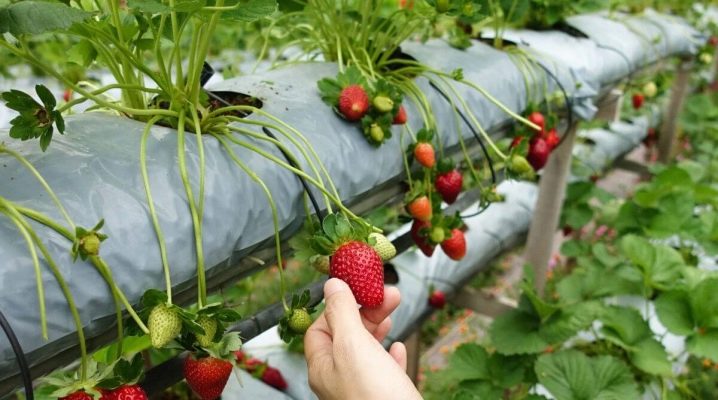
Fungicides are used initially to protect plants as a whole. If we talk about strawberries, then Fitosporin is in great demand. In this article, we will consider in more detail the use of "Fitosporin" for strawberries, its advantages and disadvantages, what they are used for, as well as detailed instructions.

Advantages and disadvantages
Fitosporin is known among gardeners for its positive effects on plant development. This preparation contains a large number of living cells and spores, among which the spore culture Bacillus Subtilis is of particular importance. Thanks to the use of "Fitosporin", fruit crops become more resistant to various kinds of diseases. This preparation will protect the plant from bacteriosis, rot, powdery mildew, whitefly and ticks, black spot and pink mold, brown spot and cercospora, from other diseases and pests.
Fitosporin is very beneficial for strawberries as it forms a protective barrier against various fungal infections. As you know, spores and bacteria can spoil the entire strawberry crop very quickly, as they spread across the plantation at lightning speed. This drug allows you to protect the plant until the very appearance of the berries, while positively affecting the crop itself, because its amount increases by 25%.
If you initially process the root system using "Fitosporin" for irrigation, then you can be sure that the strawberries will be reliably protected from various fungi and bacteria.
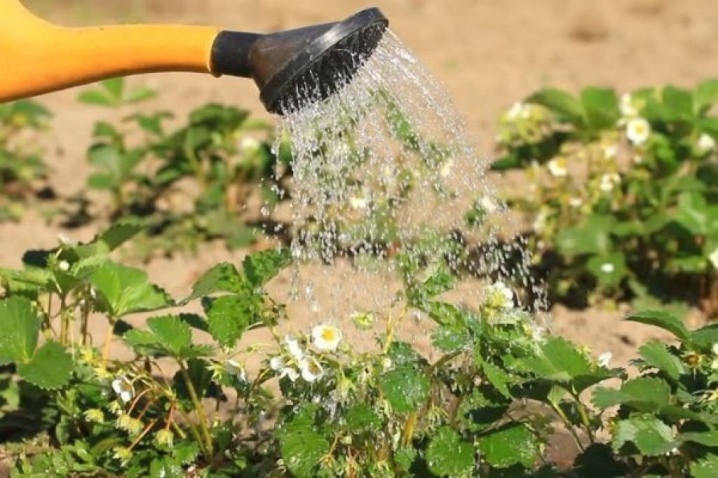
Fertilizer "Photosporin" is a new generation fungicide that protects strawberries from various garden diseases, improves general characteristics and strengthens the immune system. It is produced in several forms, which allows you to choose the best option, namely: liquid, paste and powder. In any form, this remedy acts systemically on strawberries, because when it gets into the soil, it spreads to all the beds. Its main purpose is to enhance the protective functions of strawberries in order to reduce the likelihood of disease. But you need to understand that this drug will not be able to protect plants from all troubles.
Fitosporin has such advantages as:
-
safety - this drug can be used at any stage of strawberry development, both at the beginning and during the harvest;
-
the drug is compatible with other fungicides;
-
affordable cost.
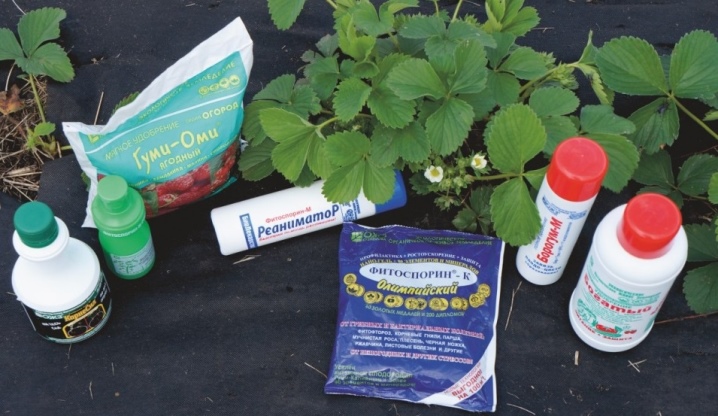
This tool has the following disadvantages:
-
the effectiveness is quite high, but it is not a panacea for all pests and diseases;
-
the drug is sold in different forms, but the packaging is not very convenient, there are no dispensers;
-
this tool is not recommended to be combined with preparations that are made on an alkaline basis.
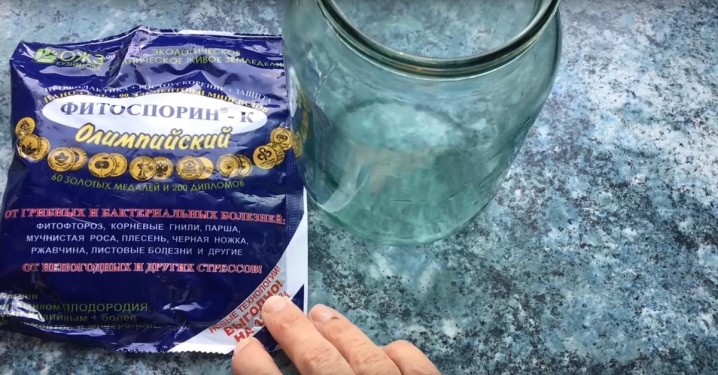
What are they used for?
If we talk about the use of "Fitosporin" in relation to strawberries, then it can be used during the entire summer season, starting from early spring and ending with processing in the fall.
Before planting strawberries, you can already make the first treatment with this fungicide. It is recommended to soak the seedlings in a mixture of "Gumi" and "Fitosporin", adhering to a ratio of 1: 5. For 1 liter of water, 10 drops of "Gumi" and 50 drops of "Fitosporin" are required.
If the strawberry beds were planted last year, then it is advisable to water them with a special solution. To prepare it, you will need to take 110 ml of "Fitosporin" for 30 liters of water. With such a volume, it will be possible to process about 300 strawberry bushes.
To prepare less solution, you just need to adhere to the proportion.
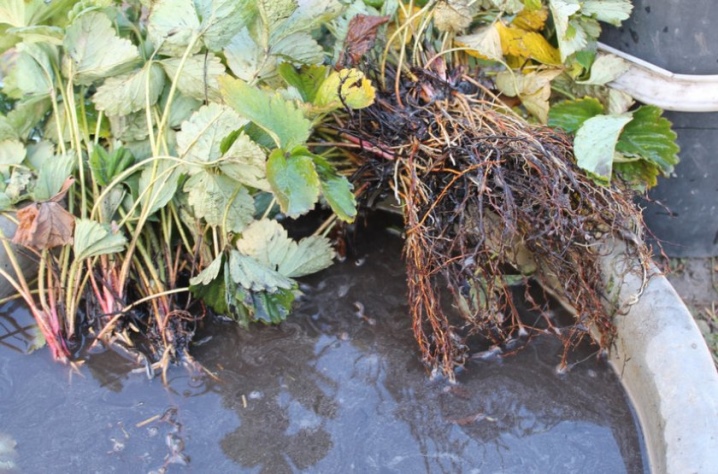
Before transplanting strawberries and strawberries, it is recommended to initially water the beds with Fitosporin. Planting is usually done in June. To prepare the solution, you will need about 5 grams of powder per bucket of water. This solution is ideal for spraying greenhouses. It is advisable to water it 7 weeks before transplanting.
To improve the soil, it is recommended to water the soil in the fall with a solution of "Fitosporin". In this case, you should adhere to the ratio of 1:20 of the drug to water. If the plants are sick, then you need to reduce the proportions 10 times, adhering to the ratio 1: 2. Plants are watered and sprayed with this solution. After 10 days, it is advisable to repeat the procedure. Re-spraying is done with a solution of 1:10.
Important! "Fitosporin" does not have a negative effect on the harvest, so you can eat berries even on the day of processing. But it should be noted that for the best effect, it is undesirable to touch the strawberry bushes until about 3-7 days after treatment.
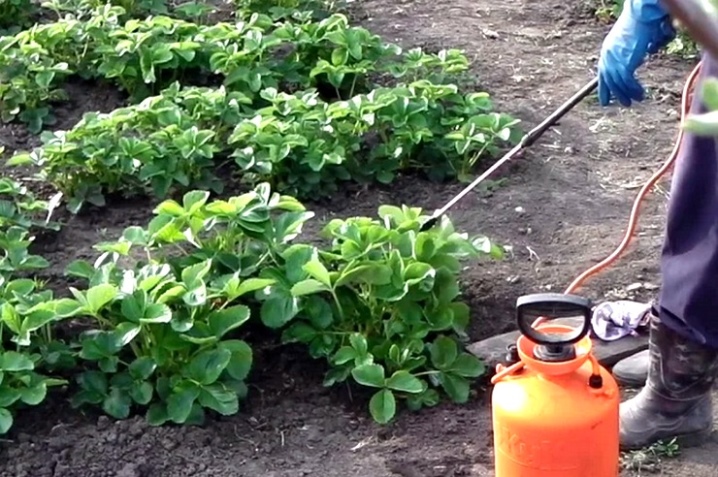
Instructions
"Fitosporin" is a fairly effective agrochemical, which not only allows you to protect the plant from various diseases, but also promotes active growth, acting as a powerful organic fertilizer. It is quite simple to process strawberries with this substance, you do not need to have special knowledge. But you should start from the form, because this substance is sold in the form of a liquid, gel and powder. In addition, you need to pay attention to the manufacturer, as different manufacturers provide the substance with different concentrations. That is why, before using the fungicide, read the instructions in more detail.
Prepare a solution of "Fitosporin" just before using it. During storage, it begins to lose its properties. In addition, non-chlorinated water should be used, since the presence of chlorine reduces the effectiveness of the drug.
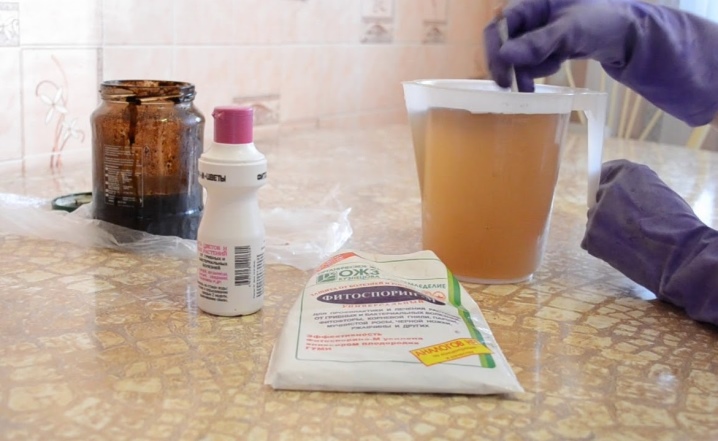
Paste
This option is quite often purchased, so you should pay attention to its preparation. To create a concentrated solution, you will need to take twice as much water as the paste itself. And then spray solutions are made from it for disinfecting seedlings or strawberry seeds.
To prepare a solution that will disinfect seedlings, you need to take only 4 drops of concentrate per 200 ml of water. After that, it is necessary to dip the roots of seedlings or seeds into the resulting solution and wait 2 hours.
If strawberry beds are to be sprayed or watered, then 10 liters of water will require 3 teaspoons of the concentrated solution. This amount is enough to water about 2-4 square meters of strawberries or spray 100 square meters.
If you need to clear compost or soil from various bacteria and organisms, then 1 tablespoon of concentrate is enough for 10 liters. This amount is enough to cope with 1 square meter of the plantation.
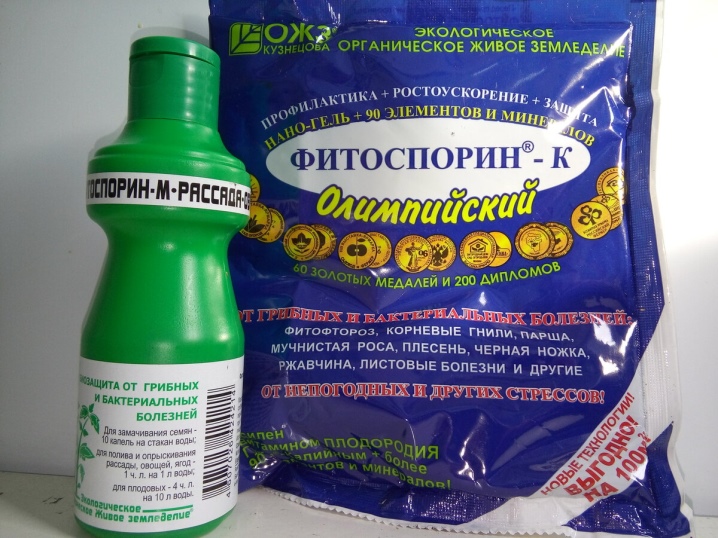
Powder
Some gardeners buy Fitosporin in powder form. First, you need to prepare a solution that is suitable for spraying strawberries, soil, seeds, greenhouses and even for plant treatment.
If you need to process strawberry seeds before planting as a preventive measure, then the solution should consist of 100 ml of water and 0.5 teaspoon of the drug. The seeds should be soaked in this liquid for 2 hours.
If you plan to process seedlings, then you need to dilute 10 grams of powder in 5 liters of water. In such a solution, the roots should be soaked for several hours. The dosage will be the same if you plan to spray on strawberries. But please note that it is recommended to make 2-3 sprays, while maintaining a pause of 2 weeks.
To prepare a solution for processing a greenhouse, it is worth using 5 grams of "Fitosporin" for 10 liters of water.
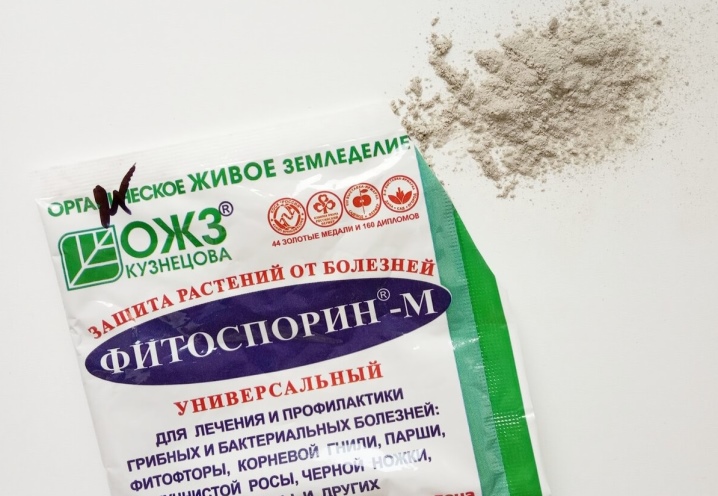
Liquid
This option is ready to use.It is purchased both for treatment and for prophylactic spraying of strawberries. Experienced gardeners pay attention to the fact that it is better to spray with a solution in the evening or in cloudy weather. The effectiveness of the drug has been tested by many gardeners.
1-2 treatments of the site are enough for the strawberries to have a good harvest and not get sick all season.
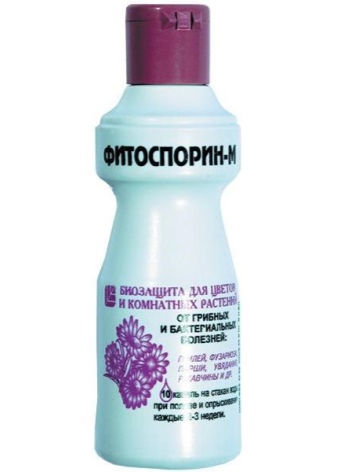














The comment was sent successfully.